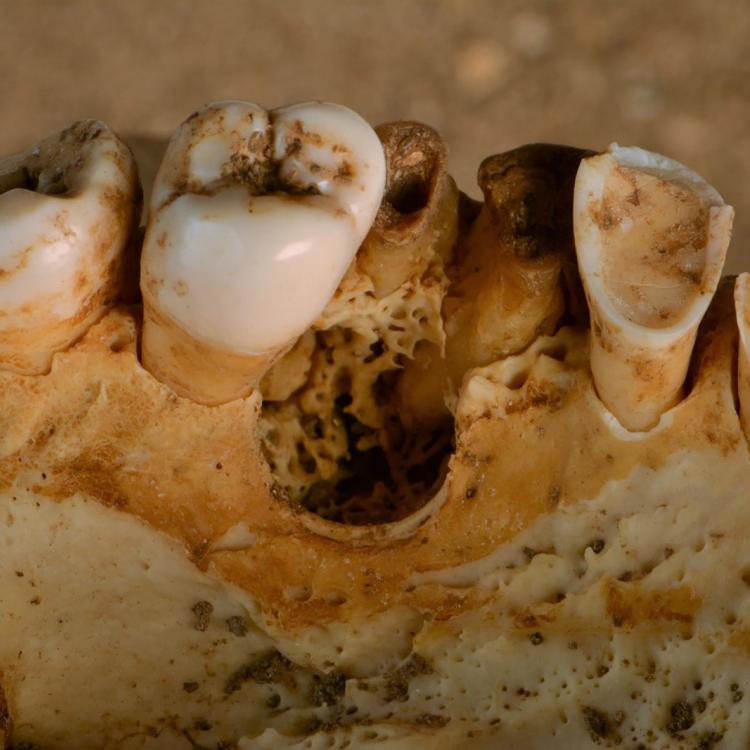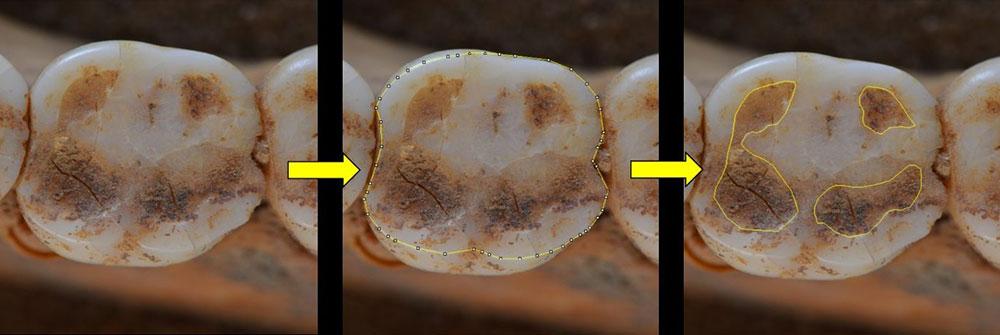Find out what a dental anthropologist does all day, and how tooth decay can lead to exciting new discoveries.
Ancient wisdom: what tooth decay can tell us about the past
The British Museum houses a vast collection of human remains, from all over the world. They are studied by academics to try to better understand people from the past. I have been lucky enough to have been awarded a Collaborative Doctoral Award, based at University College London and the Museum, to study some of these individuals.
What can we learn from these ancient human remains? My research focuses on remains from ancient Sudan. In particular, I look at the teeth of people who lived along the Nile between the Neolithic and the medieval periods, that's from around 6000 BC to AD 1500. Officially, I'm called a dental anthropologist. I am looking at changes in the frequency of dental disease and gum disease, as well as how people were using their mouths. The idea behind this project is to link these dental changes to social, cultural and environmental shifts, clues to which have been suggested by archaeological investigation.
You might say that studying human remains is a rather unusual activity. To give an idea of what it entails, I thought I might describe 'a day in the life' of a dental anthropologist. All of my data collection happens at the Museum, as large collections of human remains from cemeteries around Sudan were donated to the Museum by the National Corporation for Antiquities and Museums (NCAM, Sudan) in 2007. On a day-to-day basis, my work is surprisingly practical. Our store rooms are currently in a separate part of the Museum to our research lab. This means that each morning I need to transport individual skeletons from the store to the lab. It's pretty hard work and excellent exercise – building big arm muscles is certainly an unexpected bonus of my research!
Once in the lab I start recording each individual. This involves three stages: determining age and sex, recording the teeth, and photographing the teeth for digital recording of dental wear. Each of these stages are important. By determining age and sex we can better understand and interpret the results. For instance, some diseases are more common in older people, by accounting for age any unusual patterns can be highlighted.
When recording the teeth themselves, I look firstly for which teeth are present. This means that each tooth, or fragment of tooth, must be identified and I must decide on its position within the mouth. Human teeth, while being quite distinctive from one another, can be difficult to identify in archaeological material. Luckily, my Master's degree in Skeletal and Dental Bio-archaeology (at the Institute of Archaeology, UCL) has prepared me for such challenges, as well as the fact that over the last year I have looked at over 15,000 teeth.
Next, I look for signs of dental disease – also known as dental caries, dental cavities or tooth decay. It's unlikely that there was much dental care in many of the cultures from which the remains originate, and as such, some of the dental disease is fairly obvious.
Lastly, I photograph every tooth for digital analysis of the dental wear. We really don't use our teeth like we used to. Most people will go through life not realising that the shiny, white enamel of their teeth is slowly being worn away by use. But back in Neolithic and even in later medieval times, the food people were eating was much tougher and probably had bits of grit and other material in it. This meant that the enamel and even the dentine (the softer tissue that lies under the enamel) was worn away through life. This is useful for dental anthropologists, as the different rates and patterns of wear can tell us a little something about changing diets and food preparation.
So that is my recording process, which I will repeat for over 500 individuals.
One of the results of my analysis so far is that there seem to be differences between the frequency of dental disease in male and female individuals during the medieval period. Clinical research suggests that females may be more susceptible to dental disease than males. However, what I have found is that it is not just dental disease that differs between the sexes, but gum disease, abscesses, tooth loss and even dental wear. These results might suggest that men and women had quite different diets during this period, or were perhaps eating food that had been prepared in different ways. This is an exciting discovery, that could illuminate some aspects of ancient Sudanese culture that are not yet clear. But it's just the beginning. As my research progresses, many fascinating results are coming to light, and I can't wait to see what the whole picture looks like in the end.
As my work is part of a Collaborative Doctoral Award, there are huge advantages to such a collaboration – not only the fantastic training opportunities at both institutions, but also the chance to bring aspects of my research to the public. I was recently privileged to be involved in the redesign of a case dedicated to bio-archaeology (the study of human remains) in Room 63.
The new display explains bio-archaeological techniques and shows examples of the diseases found in remains from the Nile Valley. The diseases found include leprosy, tuberculosis and even cancer, which until recently was thought to be a relatively modern disease. As well as this there are some fascinating examples of dental disease and dental wear.
If you want to learn more about the fascinating stories teeth and bones have to tell, I would highly recommend stopping by the new display to find out more.
The British Museum is committed to curating human remains with care, respect and dignity.
Rebecca's research has been part of a collaborative doctoral partnership studentship funded by The Arts and Humanities Research Council. Find out more about other collaborative doctoral students supported by the British Museum.










